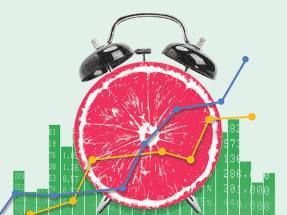
- Learn how to sensibly and strategically align your portfolio
- Risk-weighted models to suit circumstances and lifestyles
How much risk an investor should take depends on their ability to sit comfortably through spells when their portfolio falls from previous peaks in its value. This is partly a question of personality but more importantly, it’s about having the capacity not to have to sell holdings when they’re down and crystallise losses.
Investors’ Chronicle has created a series of asset allocation models. There are fourteen in total but our three models for investors pursuing cautious, medium risk and high-risk strategies, are the basis for the other models that consider more specific needs.
Who are these investing strategies suitable for?
Cautious – for people who expect to sell investments in three to five years, or for those who can’t stomach seeing their portfolio suffer falls of over 10-12 per cent in a spell of very bad months.
Medium Risk – for people who are planning on staying invested for at least five years, but who are happy to moderate expectations of returns in order to reduce the likelihood of their portfolio falling by more than 20-25 per cent in the worst times for asset markets.
High-Risk – for people who are investing for the long-term, typically 10 years or more. Thanks to a horizon spanning decades, they are prepared to ride out periods where the portfolio could fall in value by up to 40 per cent. The reward for doing so could be that, despite such stressful episodes, the good times for the portfolio translates into a higher rate of positive return overall.
How were the asset allocation strategies developed?
Our asset allocations took total returns data from a broad index of UK government bonds to represent the fixed income asset class.
For shares, we weighted the MSCI World index and a proxy for the FTSE All Share UK index in a 60:40 ratio; again, we measured total returns.
For the ‘other’ asset class we spliced indices representing UK real estate, global real estate, private equity investment trusts, gold and commodities, each with a fifth weighting.
Cash was based on very short-dated secure government debt – the yield on the benchmark 1-month UK government bill.
This data doesn’t cover the entire opportunity set of investments available now but it goes back to 1976, which means we were able to see how the asset allocation weightings in our models performed through over four decades of recessions, bear markets and financial crises.
Naturally, the risk investors are most worried by is the size of falls their portfolios suffer. Therefore, we compared the deepest falls of the asset allocation models to just investing in our weighting of the two shares indices.
It was assumed the asset allocation models were rebalanced to their weightings in April, at the start of the financial year, which has a positive effect because it naturally recycles gains in good periods for the riskiest assets into safer assets like bonds and cash. To be realistic, we also assumed a 1.5 per cent cost to cover charges and platform fees, which was also levied each April.
The other way to measure risk, is to look at the overall volatility of a portfolio. This is basically how the size and frequency of changes in values stacks up when annualised. This includes positive and negative movements in values, so it was pleasing to note that all our risk models experienced proportionately less of the market fall risk of shares, than the volatility risk. In other words, they gave up less of the positive returns to reduce the very worst negative returns.
What is the outlook for assets?
In 2021, investors expect rewards from risk assets in 2021 while central bank policies to be more tolerant of inflation. The principle of risk management and discipline therefore remain crucial, as James Norrington explains here.
Next steps:
- Finalise your objectives
- Honestly assess your attitude to risk and which bad scenarios you can cope with
Once you have chosen a strategic asset allocation, then you’ll want to think about appropriate investments to populate the slices.
These models are just a guide, they won’t be flawless and many of the relationships that have underpinned them could have changed. Therefore, we have been careful not to label our Cautious strategy as low risk.
It is highly likely that investors will have to take more risk within certain asset classes (especially fixed income) than in the past to achieve returns. Furthermore, the risk of any uptick in inflation means holding ‘safe’ assets like cash or government bonds cannot truly be considered risk-free. That said, having a starting point to think about risk and returns is important. It sets expectations more realistically and should still help investors limit their exposure to the worst market falls.















